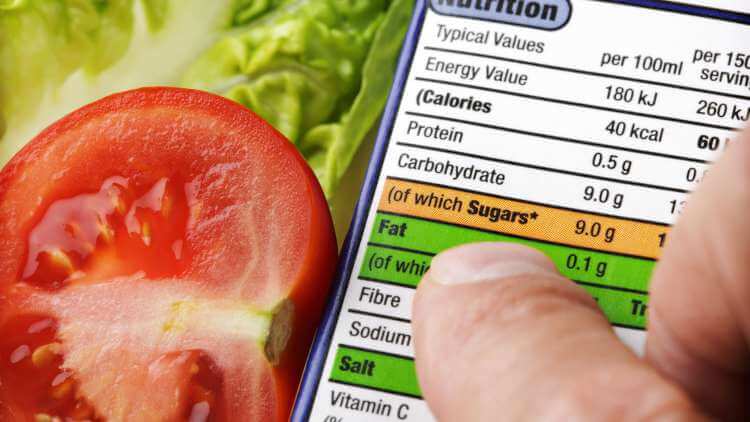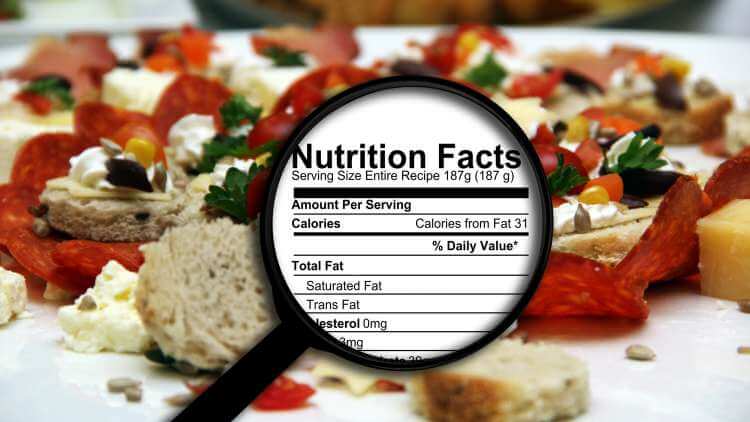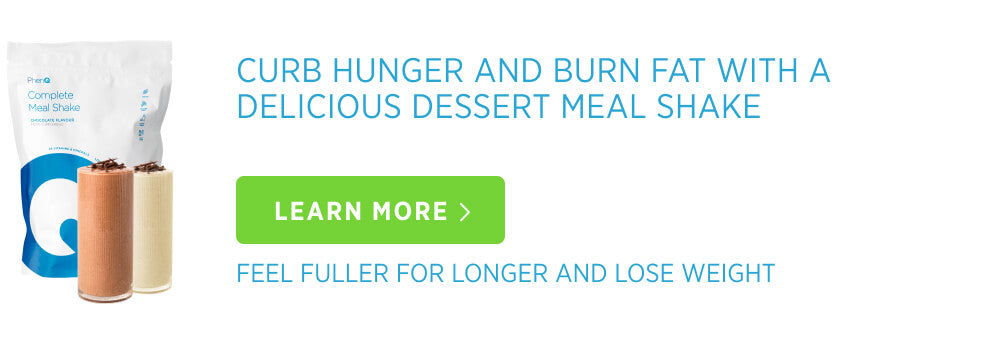Food labels can often seem complex and confusing. The writing is tiny, meanings are unclear, and scientific jargon can sound like another language entirely. However, knowing how to read food labels is essential if you’re going to succeed at losing weight. So let’s take a look at exactly what they mean and how to use the info on them to your advantage.
Why calories aren’t as simple as you might think
Calories are often the first thing we look out for on a food label, but they’re not as simple as you may think.
Calories are a unit that measures energy, much like a meter measures distance or minutes measure time. They tell us whether we’re getting enough energy to fuel our body for everyday activities. If we consume too many calories, the excess energy may be stored as fuel reserves (fat) and lead to weight gain. In this respect, they’re a helpful guide to keep us on track.
However, calories don’t tell us anything about the quality of that energy. Does it contain vitamins and minerals that are essential for our overall health? The metabolism can’t function correctly without them, let alone all the other systems in the body. How satisfied will the food make us feel, and will we become hungry again afterwards? A single gram of fat contains 9 calories whereas a gram of protein contains 4. So, we can eat double the volume of protein which will fill us up more and still be consuming fewer calories.
If weight management were as simple as balancing calories in vs calories out, then people would find it much easier. In theory, you could stay lean by eating crisps and cookies, as long as you didn’t exceed your daily calorie requirement. But in reality, nutrition and weight loss are much more complex than this.
You can’t really consider 100 calories from a chocolate bar and 100 calories from an avocado on equal terms, since one provides much more nutritional value and will keep you fuller for longer. So, although calories in vs calories out is a useful starting point, we need to consider the nutrients themselves. This will give us a greater chance of successfully losing weight in a way that doesn’t make us malnourished.
Why food labels can cause confusion

Food labels can cause confusion for a number of reasons. The first is that food manufacturers often make health claims on their products such as ‘low in fat’ or ‘source of protein’ but these don’t help us understand exactly how much is in the product. It’s also common for them to add these ingredients artificially, which means you aren’t always benefiting from the most natural or healthiest version.
Whether something is ‘high’ or ‘low’ in a certain nutrient is often determined by the percentage it contains. Sometimes this is helpful, but other times it can be misleading. For example, nuts would be considered ‘high’ in fat on a percentage basis but when you consider the typical serving size (one handful) then it’s really not much in total grams. Some people avoid nuts for this reason when they’re actually very good for your health.
Government rules say that nutrients have to be stated based on 100g of a product, which helps to compare the contents of different options. You can pick up two jars of pasta sauce and easily work out which has more fat or less salt. But what if 100g isn’t a typical portion size for the food you’re looking at (such as the case for nuts)?
Some manufacturers will include this info on food labels but others leave you to work it out for yourself. It’s not always easy if you don’t know what the right portion size is or aren’t able to calculate the maths involved. This can increase confusion and lead to people thinking that something is healthy or unhealthy when the opposite is actually true.
However, it’s not all bad news. Nutrition labels have come a long way in the last few years with the introduction of the ‘traffic light system’ and consistent rules on how ingredients are presented. So, although they can be confusing in some cases, they do provide useful information if you know how to interpret them correctly.
How to read food labels the right way
If you’re wanting to lose weight, then it’s essential you know how to read food labels. Not being savvy about what you’re eating can lead to unintentional weight gain and frustration about the lack of results. Many people have been caught out by eating what they think are healthy foods, only to find that they put on pounds instead of losing them.
There are 3 steps to reading a food label:
- Locate the nutrition information – it’s usually on the back in the form of a table or list.
- Identify whether this info is per 100g or per serving – if it’s the latter you can move on to the next step, but if it’s per 100g then you’ll need to divide or multiply the nutrient figures based on how much you’ll actually eat.
- Compare it to your daily needs – this will depend on several different factors, such as your age, gender, activity level, and any health conditions. You can calculate yours using this guide.
Getting the right amount of nutrients
Here’s some guidance on the individual nutrients your body needs on a daily basis. Follow this, and your diet will be pretty well balanced:
- Energy (calories/kcal) – Compare it to the daily needs you calculated previously.
- Carbohydrate – Should be 40-50% of your total calories or energy.
- Sugars – Are a type of carb and should be a maximum of 5% of calories.
- Protein – Aim for around 25-30% of calories.
- Fat – Should be a maximum of 35% of calories.
- Saturates – Are a type of fat and should be a maximum of 10% of calories.
- Salt – You should ideally consume less than 6g per day.
If you’d like more information on vitamin and mineral requirements, take a look at the Government’s Dietary Recommendations.
Choosing foods to support your weight loss efforts
It’s important to remember that ultimately, we eat food, not nutrients. Drinking plenty of water, getting your 5 a day, and aiming for 2 portions of oily fish per week will go a long way towards keeping you on track. Choosing lean protein such as chicken and turkey will keep you feeling fuller for longer and can increase lean body mass in combination with exercise.
If you want a little extra help, an appetite suppressant like PhenQ can make you feel less hungry so the journey’s a little easier. Take a look at Phenq reviews to see how others have successfully lost weight thanks to PhenQ’s ability to stop cravings.




